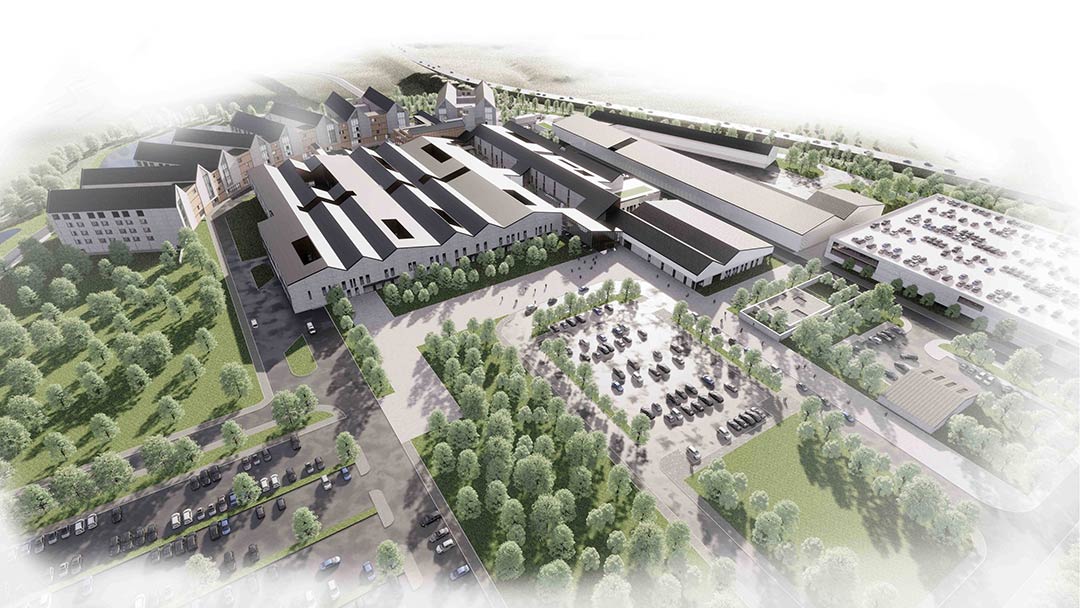There has been plenty of work going on during the last quarter as the Monklands Replacement Project (MRP) moves ever closer to completion of its outline business case for the new University Hospital Monklands at Wester Moffat, Airdrie.
Fiona Cowan, MRP clinical lead – nursing, said: “In January, the team visited the Royal Hospital for Children and Young People in Edinburgh to look at their outdoor areas and open-plan office and administration space. The visit was a great success and generated discussion and ideas for moving forward with the project.
“Work on hospital design continues, with the last of the departmental layouts at 1:200 scale – including the elective orthopaedic ward – now complete for this stage although subject to change as the project progresses. We’ve had excellent stakeholder and public/patient participation in the workshops. A number of areas have also been designed at 1:50 scale and there’s been a review of the equipment requirements for these.”
“A new workforce planning group has been set up, addressing all job families and closely aligned to the project’s service redesign work,” said MRP workforce lead Laura Ireland. “We’ve been planning an observation study of single patient rooms at University Hospital Wishaw, to measure workload associated with them across all job roles. This will start in May and be used to review the staffing assumptions for the new hospital’s inpatient wards, which will have single rooms throughout, and to inform the requirements for the business case.”
MRP redesign lead Donna McHenry said: “We’ve worked closely with the University Hospital Monklands site planning group to review service plans for the current hospital, aiming to mirror the MRP’s models for clinical care. Monklands will be first to test the Patientrack digital observation system’s ‘hard alerting’ component, which highlights patient deterioration to clinical teams via automatic phone alerts.
“Work has been taken forward on admin & office space, using feedback from visits to other hospitals. Plans for outpatient services are also developing, with sub-department leads reviewing their funded staffing in relation to their model in the new layout. In addition, we received a very good response to a staff survey, asking colleagues about facilities they’d like in the new hospital. Their valuable feedback will be shared when it has been collated.”
“The digital co-ordination sub-group met for the first time in January,” said MRP senior project manager Kate Henderson. “There are several digital workstreams and we’ve set out out the purpose of each, their current status and next steps.
“We’re delighted to have appointed a digital lead, Maureen McGinn, and an external consultant with expertise in healthcare construction projects and IT infrastructure design will also work with the project.”
MRP infection prevention and control (IPC) nurse consultant Linda Thomas said: “An overview of the design approval process, with additional IPC content, was discussed and agreed.
“We completed stage one of HAI SCRIBE (Healthcare Associated Infection Systems for Controlling Risk in the Built Environment), which is a risk management tool that can be reviewed and updated if and when new information is presented to the MRP team. Since then we’ve been undertaking the design and planning for stage two of HAI SCRIBE.”
“The Monklands Engagement Forum (MEF) provides crucial public/patient input from representatives of groups including community boards, community councils, the third sector and public partnership/health & social care forums,” said MRP communications and engagement officer Bob Smyth.
“An important milestone in March was the public consultation required prior to submission of the MRP’s planning application. The MEF assisted with review and feedback on the communications and engagement plan and also gave their views on stakeholders. During the period there were also presentations and discussions about opportunities for co-production in project engagement, the digital vision, and the NHS Scotland Assure assurance process.”



